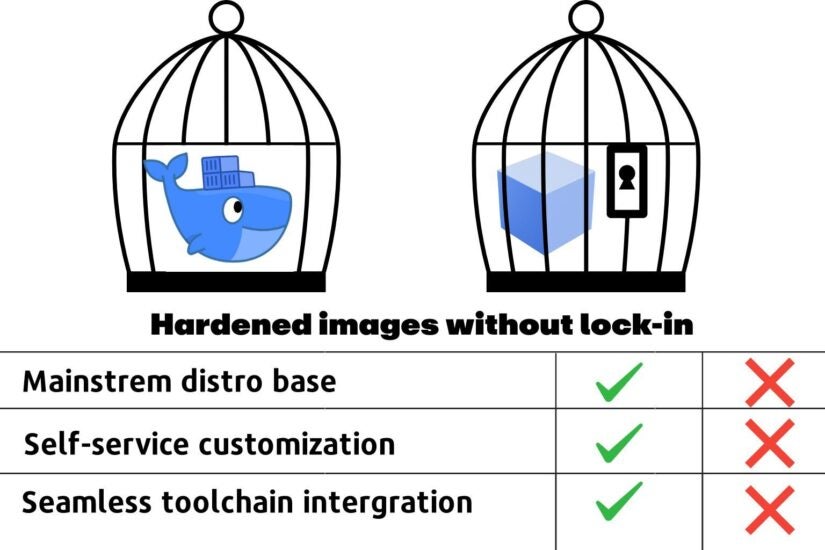cloud vendor lock-in prevention strategies
Breaking Free: Enterprise-Grade Cloud Vendor Lock-In Prevention Strategies
As organizations deepen their cloud commitments in 2025, CTOs face increasing challenges with vendor dependency. Our analysis reveals how strategic planning and architecture choices can preserve flexibility while maximizing cloud benefits.
Cloud vendor lock-in represents one of the most significant strategic challenges facing technology leaders today. As enterprises build increasingly complex cloud infrastructures, the risk of becoming dependent on proprietary technologies, APIs, and ecosystems grows exponentially. This comprehensive analysis examines proven strategies to maintain flexibility and control in your cloud journey.
Market Overview
In 2025, cloud vendor lock-in has emerged as a critical concern for organizations across industries. According to recent market observations, many enterprises find themselves tied to cloud service providers without cost-efficient exit paths, creating significant business constraints. The challenge has intensified as cloud providers continue expanding proprietary service offerings that initially accelerate development but ultimately create dependency.
A key trend emerging in 2025 is the shift toward managed multi-cloud strategies, with organizations actively distributing workloads across multiple providers to maintain flexibility and negotiating leverage. This approach has gained traction particularly among mid-to-large enterprises seeking to avoid the hidden costs associated with single-vendor dependency, including restricted innovation paths and diminished bargaining power during contract renewals.
Technical Analysis
The technical foundations of vendor lock-in prevention center on architecture decisions that prioritize portability and interoperability. Cloud-native applications built using containerization (particularly Kubernetes-based deployments) provide significant protection against lock-in by abstracting workloads from the underlying infrastructure. This containerization approach enables workload portability across environments with minimal modification requirements.
Data portability represents another critical technical consideration. Organizations should implement data architectures that utilize standard formats and avoid proprietary data structures whenever possible. This includes leveraging open-source databases, standardized APIs, and platform-agnostic data processing frameworks. Technical evaluations should specifically assess:
- API compatibility and standardization across potential providers
- Data migration capabilities and associated costs
- Dependency on provider-specific services and features
- Compatibility with open standards across different cloud verticals
Organizations that fail to support open standards often face significant customization requirements later when attempting to avoid lock-in scenarios. Technical due diligence should include proof-of-concept deployments to verify service compatibility with portability requirements.
Competitive Landscape
The competitive dynamics between cloud strategies reveal distinct advantages for organizations implementing lock-in prevention measures. Single-cloud deployments typically offer initial simplicity and integration benefits but create significant long-term constraints. In contrast, multi-cloud and hybrid approaches provide enhanced flexibility and negotiating leverage.
When comparing approaches:
| Strategy | Cost Efficiency | Implementation Complexity | Vendor Leverage | Innovation Flexibility |
|---|---|---|---|---|
| Single Cloud | Initially high, diminishes over time | Low | Limited | Constrained to vendor roadmap |
| Multi-Cloud | Optimized through competition | High | Strong | Extensive |
| Hybrid Cloud | Balanced | Medium | Moderate | Flexible |
Organizations implementing multi-cloud strategies report 15-30% improvements in negotiating leverage during contract renewals and significantly reduced migration barriers when adopting new technologies. However, these benefits come with increased operational complexity that must be managed through proper governance and automation.
Implementation Insights
Successful implementation of lock-in prevention strategies requires deliberate planning and governance. Based on enterprise implementations analyzed in 2025, the following approach has proven most effective:
1. Comprehensive Vendor Research: Before committing to any cloud provider, conduct thorough due diligence including proof-of-concept deployments. Carefully examine terms of service and SLAs, particularly focusing on data and application migration provisions. Many providers charge substantial fees when customers migrate data out of their services, creating financial barriers to exit.
2. Contract Management: Implement rigorous contract monitoring to track commitments and renewal dates. Many vendors employ auto-renewal clauses that extend commitments unless proactively addressed. Negotiate explicit exit terms during initial contract discussions when leverage is strongest.
3. Application Architecture: Design applications with portability as a core principle. This includes:
- Containerization of workloads
- Infrastructure-as-Code implementations that can be adapted to different providers
- Abstraction layers between applications and cloud-specific services
- Standardized data formats and storage approaches
4. Exit Strategy Development: Create and maintain documented exit strategies for critical workloads, including estimated migration costs, timelines, and technical requirements. This preparation significantly reduces transition friction when needed.
Expert Recommendations
Based on comprehensive analysis of enterprise cloud deployments in 2025, I recommend the following strategic approach to preventing vendor lock-in:
Adopt a Deliberate Multi-Cloud Strategy: Rather than reactively distributing workloads, implement a strategic multi-cloud approach that matches workload characteristics to provider strengths while maintaining portability. This requires additional governance but delivers significant flexibility benefits.
Prioritize Data Sovereignty: Maintain control over your data through architecture decisions that separate storage from processing where feasible. Implement regular data extraction and backup processes to alternative platforms, ensuring practical (not just theoretical) portability.
Build Internal Cloud Expertise: Develop internal capabilities that understand multiple cloud environments rather than specializing in a single provider's ecosystem. This knowledge diversity creates organizational resilience against lock-in.
Leverage Abstraction Technologies: Implement cloud management platforms and abstraction layers that normalize differences between providers. While adding some complexity, these technologies significantly reduce switching costs.
Future Outlook: Looking ahead, we anticipate increasing standardization across cloud services as market maturity grows. Organizations that implement lock-in prevention strategies now will be best positioned to leverage these improvements while maintaining negotiating leverage with current providers.
Recent Articles
Sort Options:

The Supply Chain Paradox: When “Hardened” Images Become a Vendor Lock-in Trap
The market for pre-hardened container images is booming as organizations seek efficient security solutions. However, this trend may inadvertently create vendor dependencies, complicating operations and potentially undermining security. A strategic approach is essential to mitigate these risks while enhancing security.

Secure Private Connectivity Between VMware and Object Storage: An Enterprise Architecture Guide
The article emphasizes the importance of security in cloud architecture, advocating for private connectivity to minimize public internet risks. It highlights the defense-in-depth approach and the implementation of Zero Trust Network Access (ZTNA) for safeguarding sensitive enterprise workloads.
_Cagkan_Sayin_Alamy.jpg?width=1280&auto=webp&quality=80&disable=upscale)
How to Stay a Step Ahead of a Non-Obvious Threat
Securing business logic is essential for organizations, transcending mere technical necessity to become a critical business imperative. The article emphasizes the importance of robust security measures to protect valuable business processes and maintain competitive advantage.

Over 100 Dell models exposed to critical ControlVault3 firmware bugs
Cisco Talos has identified critical vulnerabilities in Dell's ControlVault3 firmware, affecting over 100 laptop models. These flaws could allow attackers to bypass Windows login and implant malicious firmware. Users are urged to update their systems and assess security measures.

Enterprise software giants weaponize AI to kill discounts and deepen lock-in
Forrester Research warns that major enterprise application vendors like Oracle, SAP, and Salesforce are leveraging their market dominance to eliminate discounts and promote high-margin AI products, signaling a shift in pricing strategies within the industry.

Mitigation Without Remediation: Rethinking Cloud Risk Resolution
Cloud vulnerabilities pose significant risks, but mitigation strategies such as AWS Service Control Policies (SCPs) provide essential protection. These measures help reduce exposure and prevent attacks, safeguarding systems from potential damage.

Be wary of enterprise software providers’ AI
IT leaders are urged to evaluate lock-in risks, data silos, and the absence of transparency in AI offerings, alongside the implications of discount removals and product bundling. These factors are crucial for informed decision-making in technology investments.

FBI urges users to beware worrying Interlock ransomware attacks
The FBI, CISA, HHS, and MS-ISAC warn organizations about the Interlock ransomware group, detailing their tactics and urging enhanced cybersecurity measures. The advisory emphasizes the importance of patching systems and implementing strong access controls to mitigate risks.